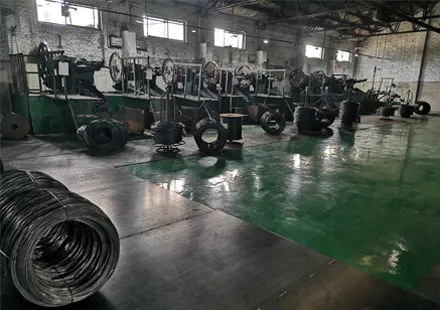10 月 . 13, 2024 11:02 Back to list
Hydraulic Hose Fittings for Optimal Performance and Reliability in Fluid Systems
Understanding Hydraulic Hose End Fittings Essential Components in Fluid Power Systems
Hydraulic systems play a pivotal role in various industries, from construction and manufacturing to automotive and aerospace. At the heart of these systems are hydraulic hoses, which transport pressurized fluids to power machinery and equipment. However, the functionality of hydraulic hoses relies heavily on one crucial component hydraulic hose end fittings. This article delves into the significance, types, and considerations of hydraulic hose end fittings, providing insights into their essential role in fluid power systems.
What Are Hydraulic Hose End Fittings?
Hydraulic hose end fittings are the connectors that secure the ends of hydraulic hoses to various components, such as pumps, valves, cylinders, and other hydraulic equipment. These fittings ensure leak-proof connections that can withstand high pressures and extreme temperatures, making them vital for the operational efficiency and safety of the hydraulic system.
Importance of Hydraulic Hose End Fittings
The importance of hydraulic hose end fittings cannot be overstated. They are responsible for
1. Sealing Properly fitted hose ends prevent fluid leaks, which can lead to reduced system efficiency and potential hazards in the workplace. An effective seal also helps maintain the pressure required for proper operation.
2. Resistance to Pressure and Temperature Hydraulic systems often operate under high pressure, which can reach several thousand PSI. Hose end fittings are designed to withstand these pressures, as well as extreme temperatures, ensuring reliable performance under demanding conditions.
3. Versatility With various sizes and types, hose end fittings can be adapted to suit multiple applications and configurations. This versatility is crucial for industrial settings where different machines and tools may have varying requirements.
4. Ease of Maintenance Quality hose end fittings simplify maintenance tasks, allowing for quicker replacement of hoses and minimal downtime in operations. Proper fittings reduce the likelihood of wear and tear over time, promoting longevity in hydraulic systems.
Types of Hydraulic Hose End Fittings
Hydraulic hose end fittings come in a wide array of designs, materials, and configurations, each suited for specific applications. Some common types include
1. JIC (Joint Industry Council) Fittings JIC fittings utilize a 37-degree flare to create a reliable seal and are commonly used in fluid power systems. They offer excellent vibration resistance and are interchangeable with other fittings of the same type.
hydraulic hose end fittings

2. NPT (National Pipe Tapered) Fittings NPT fittings feature a tapered thread design that creates a tight seal as they are screwed together. They are ideal for applications requiring a robust and secure connection.
3. BSP (British Standard Pipe) Fittings Similar to NPT fittings, BSP fittings can be found in tapered and parallel thread types. They are widely used in Europe and are crucial for connecting hoses within hydraulic and pneumatic systems.
4. Push-On Fittings These fittings allow for quick assembly without the need for additional clamps or tools. They are particularly useful in applications where frequent hose changes may occur.
5. Swivel Fittings Swivel fittings allow for rotational movement, which can be advantageous in situations where hoses need to reposition without twisting or kinking.
Considerations When Selecting Hose End Fittings
Choosing the appropriate hose end fittings for a hydraulic system involves several considerations
1. Pressure and Temperature Ratings Ensure that the fittings selected can withstand the specific operating pressures and temperatures of the system, preventing premature failure.
2. Compatibility Confirm that the fittings are compatible with the hose material and size, as well as with the fluid being transported.
3. Application Consider the specific application and environment in which the hydraulic system operates, including factors like exposure to chemicals, abrasion, or extreme temperatures.
4. Material Different materials, such as steel, aluminum, and stainless steel, offer various benefits regarding strength, weight, and corrosion resistance. The right choice will depend on the application requirements.
Conclusion
Hydraulic hose end fittings are indispensable components in hydraulic systems, ensuring that fluids are transported safely and efficiently. By understanding their importance, types, and considerations, industry professionals can make informed decisions that enhance the reliability and performance of hydraulic applications. Investing in quality fittings is crucial for maintaining the integrity of fluid power systems and, by extension, the overall functionality of machinery and equipment utilized in a multitude of industries.
-
Secure Your Roof with Quality Roofing Nails
NewsNov.04,2024
-
Secure Your Property with Quality Field Fencing
NewsNov.04,2024
-
Enhance Your Space with Quality Mesh Fencing
NewsNov.04,2024
-
Discover the Versatility of Iron Wire for Your Projects
NewsNov.04,2024
-
Discover the Versatility of Common Nails for Your Projects
NewsNov.04,2024
-
Discover Quality Hydraulic Fittings for Your Applications
NewsNov.04,2024









